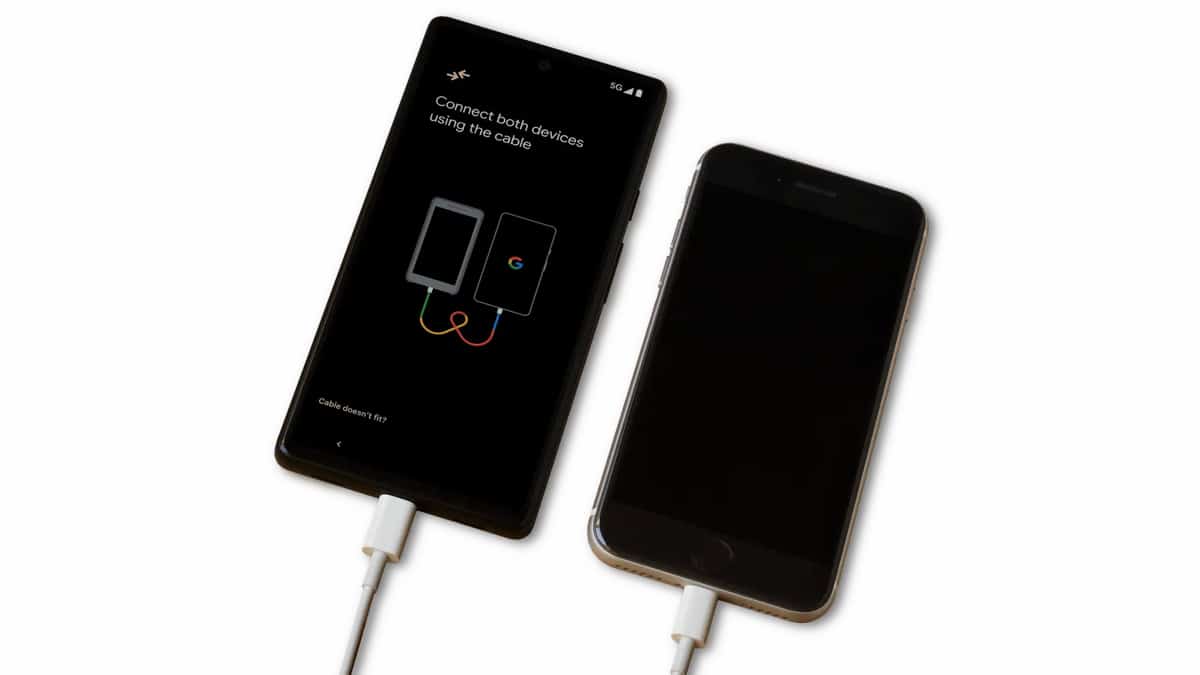iPhone Charger VS Android Charger

Table of Contents
There is nothing worse than visitng an Android user’s home and not being able to charge your dying iPhone. Or vice versus of course. The fact that all smartphone manufacturers use different charging solutions can be fustrating.
Confused about which chargers are needed for each brand and model? Our experts at PC Guide are here for you. This article will cover all you need to know about how iPhone chargers compare to Android chargers.
iPhone Charger
Apple have only used two different chargers for their iPhones. For iPhones released before 2012, they all use Apple’s old-school, 30-pin dock connector. Phones released after this or from the iPhone 5, all use Apple’s trusty Lightning connector.
It is quite unlikely that you will come across a 30-pin dock connector, nowadays. The last Apple iPhone which uses this connector is the iPhone 4S – this was released over a decade ago! In recent news, however, Apple has made a statement about changing all their charging ports to USB-C by 2024, to meet new European laws. So we should expect more hardware updates in the future when the next iPhones are released.
Android Charger
There are so many phone manufacturers who use Android operating systems. Some that you may have heard of are Samsung, Google Pixel, Huawei, Oppo, OnePlus, Sony XPERIA, Motorola and Nokia to name a few.
When it comes to Android chargers, it can be confusing and sometimes fustrating. Depending on the manufacturer and phone model, the charging port normally varies between a Micro USB and USB-C. We have created a table to help you identify which charger your Android phone needs.
| Charging Port | Samsung | Google Pixel | Huawei | OnePlus |
| Micro USB | – Samsung Galaxy S (2010) and models up to and including Samsung Galaxy S7 (2016) | – All Huawei Ascend models – Huawei Mate S – Huawei Mate 8 | – OnePlus X – OnePlus One | |
| USB Type- C | – Samsung Galaxy S8 (2017) and models released after | – All Google Pixel models | – Huawei Mate 9 (2016) and Mate models released after. – Huawei P10 up to P40 | – All OnePlus models (excluding OnePlus X & OnePlus One) |
As we can see, Samsung have made a transition from Micro-USB to USB Type-C in 2017 (from the Samsung Galaxy S8 onwards). Simiarly, with the Google Pixel, all the models use USB-C charging.
Looking at Huawei now, all the Huawei Ascend models use Micro-USB ports. Whereas, the more newer models released after 2016 all exhibit USB-C chargers.
OnePlus only have two phones that use Micro-USB, the OnePlus X and OnePlus One. The rest all use USB-C, so that’s easy to remember. There are a number of benefits, for manufacturers moving to USB-C. Not only the fact that they widely used, but that USB-C can support fast charging.
Can You Use An iPhone Charger On A Samsung Phone?
Unfortunately, you cannot use your iPhone charger on a Samsung phone. iPhone chargers consist of a wall adapter and either a USB to Lightning or USB-C to Lightning cable. Since Samsung phones require a charging cable with a USB-C connector as the phone input, this cannot be achieved using an iPhone charger.
In the future, Apple will be releasing iPhones with a USB-C charging port to adhere to new European Parliament laws. This is a change we expect to see across all Apple products around the world, not only in Europe. Once this happens, technically iPhone chargers will be able to charge Samsung Phones.
Do iPhones Charge Faster Than Androids?
This is not a straightforward question anymore as Apple iPhones also have fast charging capabilites – a feature that was originally introduced in Androids.
In some cases, Android phones charge at faster rates than iPhones. This is because some Android developers and manufacturers have access to quick charge features such as Quick Charge 3.0 by Qualcomm. With the Quick Charge capabilities, Android phones such as the Google Pixel can recieve their required 23 watts quickly using Programmable Power Supply (PPS) chargers.
A test conducted by 9to5 Google found that the latest Samsung Galaxy S22 Ultra can be fully charged in 59 minutes using a 45W charger. This is very simiar to Apple’s fast charging solution. Apple’s USB-C to Lightning charger has the capability to charge iPhones to 50% in 30 minutes. This is pretty much the same as the Samsung flagship.
Apple’s new charger cable is also compatible with wall adapters from 18W to 140W. There are a few limitations to this, however. Fast charging is only available from the iPhone 8 onwards. Additionally, to fast charge your iPhone 12 or the model above, you must use a 20W wall adapter.
Regardless of the limitations, it is clear that Apple’s update is highly competitive when we compare it to its rivals Google Pixel and Samsung.
Summary
So there we have it! Most modern day Android phone chargers use USB-C ports whereas Apple iPhones still rely on the well-known, lightning connector.
In the future all smartphones will have the same charging connector, thanks to new European Laws. This is great news because we will all be able to cut down on e-waste but also be able to share chargers.
Do you enjoy articles like this? Be sure to check out our other comparison guides, here on PC Guide.
- NOW READ iPhone Charger VS Samsung Charger
